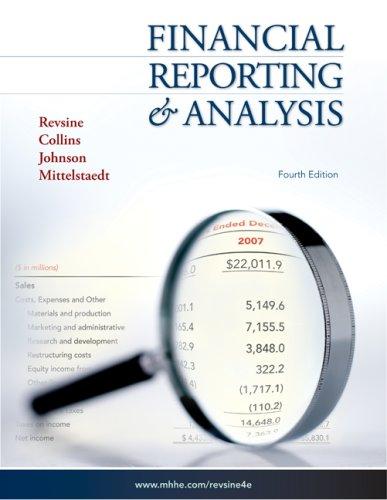The comparative income statements and edited inventory footnote for Oxford Industries, Inc. for Year 3 follow. Located
Question:
The comparative income statements and edited inventory footnote for Oxford Industries, Inc.
for Year 3 follow. Located in Atlanta, Oxford designs, manufactures, markets, and sells consumer apparel products for both men and women. Its ticker symbol is OXM.

The excess of replacement cost over the value of inventories based on the LIFO method was \($37,154\) at June 2, Year 3; \($37,367\) at May 28, Year 2; and \($39,205\) at May 29, Year 1. Changes in the LIFO reserve increased earnings \($0.02\) per share basic in Year 3, \($0.13\) per share basic in Year 2, and decreased earnings \($0.06\) per share basic in Year 1.
During fiscal Year 3, inventory quantities were reduced, which resulted in a liquidation of LIFO inventory layers carried at lower costs that had prevailed in prior years. The effect of the liquidation was to decrease cost of goods sold by approximately \($147\) and to increase net earnings by \($91\) or \($0.01\) per share basic. During fiscal Year 2, the effect of [the Year 2] liquidation was to decrease cost of goods sold by approximately \($1,174\) and to increase net earnings by \($716\) or \($0.09\) per share basic. During fiscal Year 1, the effect of [the Year 1] liquidation was to decrease cost of goods sold by approximately \($591\) and to increase net earnings by \($361\) or \($0.04\) per share basic.
Required:
1. Based on the available information, provide an estimate of Oxford Industries earnings before income taxes for Year 3 and Year 2 if the company had used FIFO accounting.
2. Using the available data, provide estimates of the amount of realized holding gains (inventory profits) that were included in Year 3, Year 2, and Year | earnings before income taxes under the LIFO method.
3. Explain why the estimated FIFO income numbers (see requirement 1) are higher or lower than those under the LIFO method. (Hint: To do this prepare a reconciliation of changes in the LIFO reserve for Year 3 and Year 2 as illustrated on page 496 of the text.)
4. As of the end of Year 3 and Year 2, compute the total amount of income tax saved by Oxford from the time of its initial adoption of LIFO. Ignore present value effects in your calculations.
For the fiscal Year 3 alone, did Oxford pay higher or lower income tax under LIFO compared to what it would have paid under FIFO? How much?
5. Compute Oxford’s inventory turnover ratio (without making any adjustments) for Year 3 under the LIFO cost flow assumption. (Express it in number of days.) Does this number provide a good estimate of the number of days inventory is held by Oxford Industries? If not, propose (and defend) an alternative approach to calculating inventory turnover. Show supporting calculations.
Step by Step Answer:






